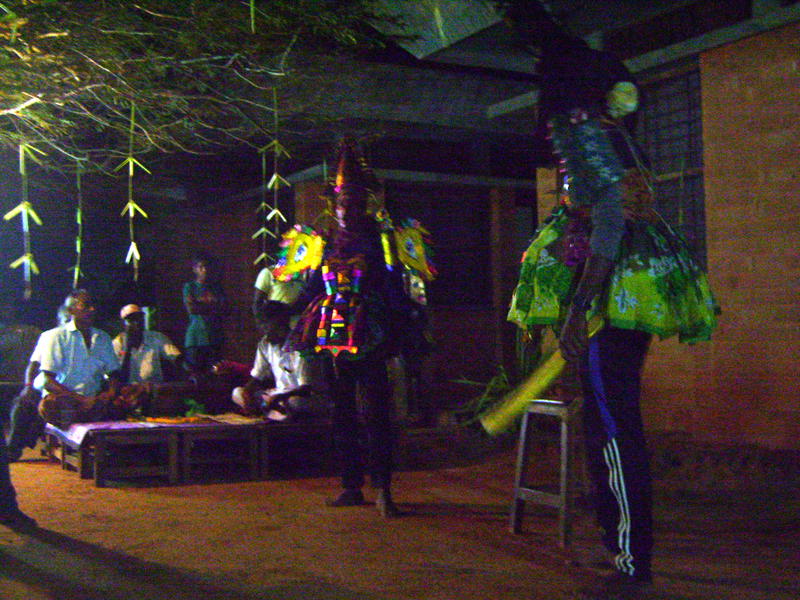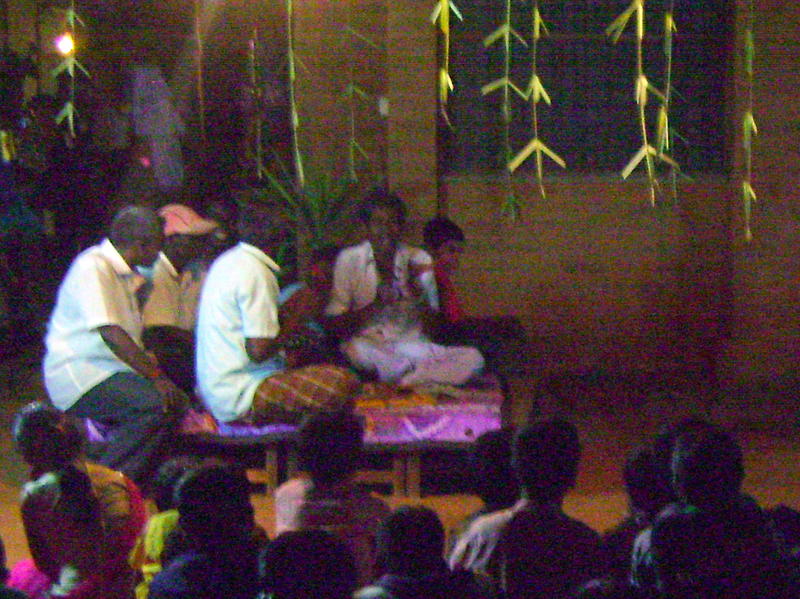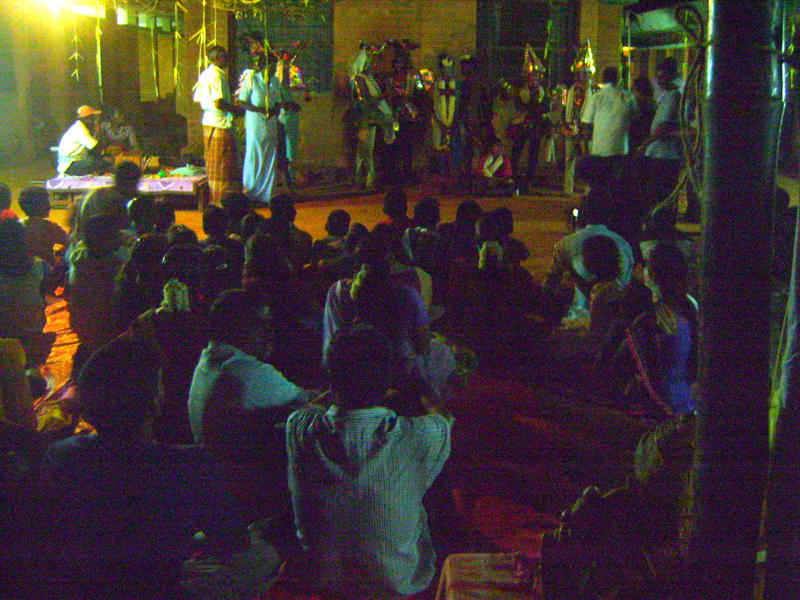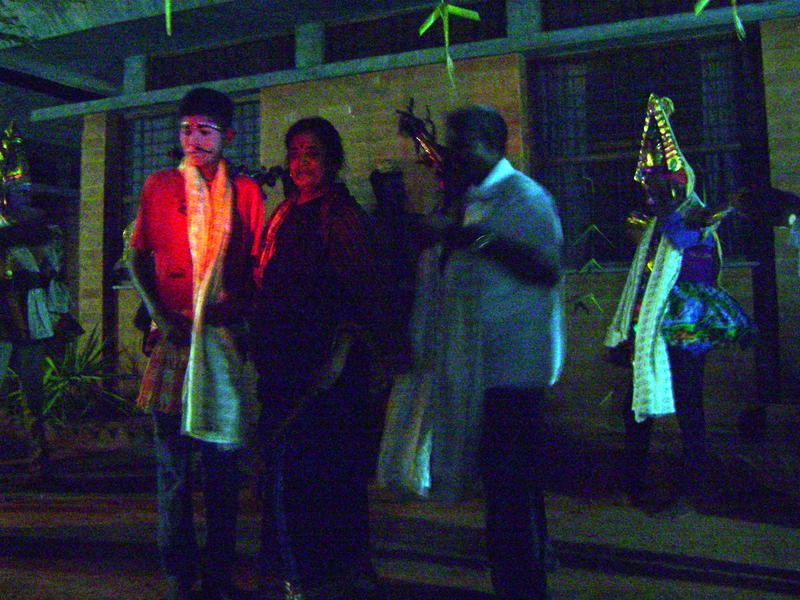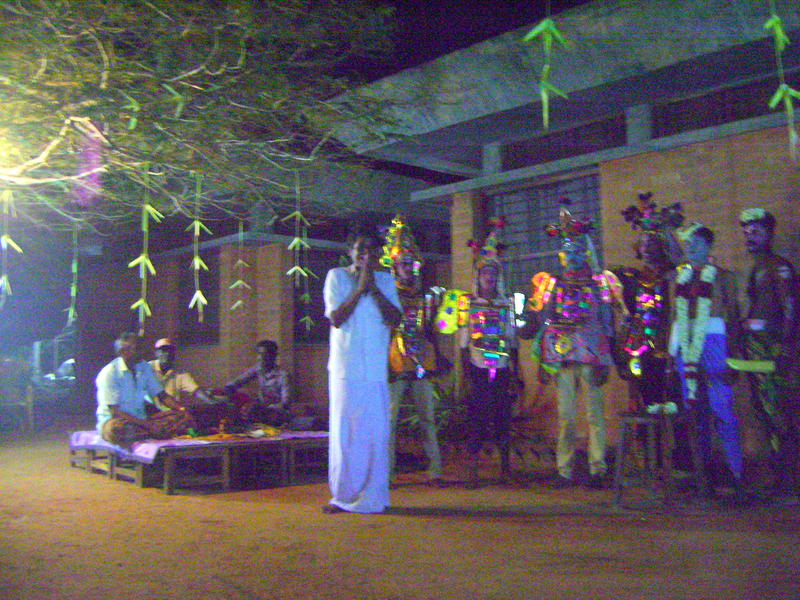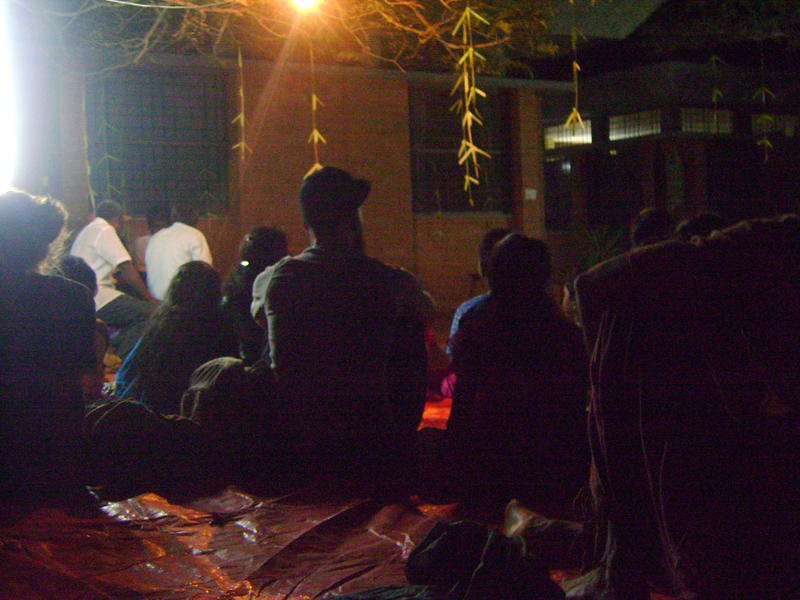Scene from Mahabharata
The Ilaignarkal Education Centre has given us the beautiful opportunity to see Tamil folk Theater Theru Koothu performance of a scene from the Mahabharata.
For the very first time have we seen this kind of folk performance; credit goes to the Mohanam Cultural Centre which is providing space and training for young students to dedicate themselves to the revival of folk theater. While watching the performance one could notice the intense work of the students, musicians, and mentors because every detail, all the way to the elaborate costumes, was done by the group.
Koothu means dance or performance in Tamil, it is a folk art originated from the early Tamil country. But more precisely Koothu refers to either Terukuttu or Kattaikkuttu. The terms Terukkuttu and Kattaikkuttu are often used interchangeably in modern times; however, historically the two terms appear to have distinguished, at least in certain villages, between two different kinds of performance: while Terukkuttu referred to mobile performances in a procession, Kattaikkuttu denotes overnight, narrative performances at a fixed performance space. Koothu as a form of entertainment reached its peak hundreds of years ago in Tamil Nadu, as mentioned in the Sangam texts about the development of iyal (literature), isai (music) and natagam (drama). Going beyond just a means of entertainment, koothu educates the rural people about religion and their history.
Koothu is an informal dance structure, the performances generally depict scenes from ancient epics like Ramayana, Mahabharatha and Tamil other classical epics. There are traditionally no dialogues, instead only songs. Artists are trained to sing in their own voice and in a high pitch to reach the entire crowd, since no amplification technology is used. The artists are dressed up with complex heavy costumes and have a very bright elaborated makeup. They put on towering head dresses, sparkling shoulder plates and wide colorful skirts. Traditionally this theater form has been predominately male, though in modern times more females have been included (e.g., Girl’s theater at the Kattaikkuttu Gurukulam).
